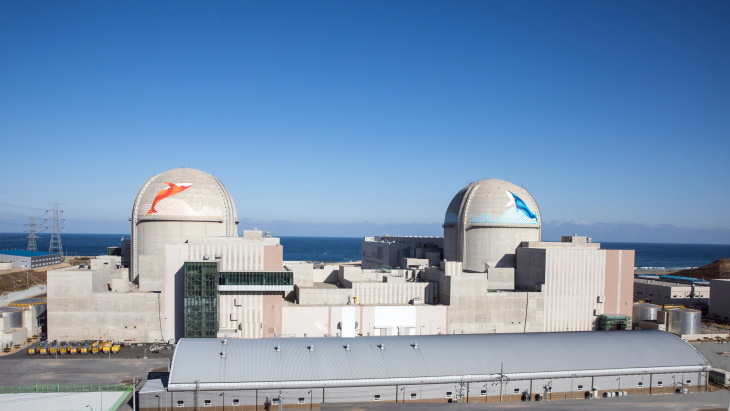Nuclear energy will account for 34.6% of South Korea's electricity generation by 2036, compared with 27.4% in 2021, according to the latest plan finalised by the country's Ministry of Trade, Industry and Energy (MOTIE).

The start up of Shin Hanul units 1 and 2 will help South Korea expand its use of nuclear energy (Image: KHNP)
In July, the government laid out a new energy policy which aims to maintain nuclear's share of the country's energy mix at a minimum of 30% by 2030. It also called for the construction of units 3 and 4 at the Shin Hanul nuclear power plant to resume. The new policy also aimed to strengthen exports of new energy industries and "capitalise on them as growth engines". It sets the goal of exporting 10 nuclear power plants by 2030, as well as the development of a Korean small modular reactor design.
MOTIE said the 10th Basic Plan for Electricity Supply and Demand - the first draft of which was released in August last year - was finalised by the Power Policy Council on 11 January after going through various procedures, such as a strategic environmental impact assessment, consultation with related ministries, a public hearing and a report to the National Assembly Standing Committee.
Suggestions made in the policy released in July have been "embodied in the 10th Electric Plan", the ministry said. "As a result, in the proportion of power generation by power source in 2036, nuclear power and renewable energy are expected to increase to more than 30% and coal power generation to decrease to less than 15%."
Under the latest plan, the proportion of electricity generated by nuclear energy will be increased to 34.6%. This increase reflects the start up of six new reactors between now and 2033 (Shin Hanul units 1-4 and Shin Kori units 5 and 6) as well as the continued operation of 12 existing reactors. Nuclear generating capacity is expected to increase from 24.7 GW in 2022 to 28.9 GW in 2030 and to 31.7 GW in 2036.
The share of electricity coming from renewable sources will increase from 7.5% in 2021 to 30.6% in 2036. Meanwhile, power generation from coal will decrease to 14.4%, compared with 34.3% in 2021, through the closure of 28 of the country's 58 coal-fired power plants.
"The 10th Electric Plan (2022-2036) puts stable power supply and demand as the top priority, composes the power supply mix by comprehensively considering economic feasibility, environment and safety, and promotes strengthening the basis for power supply and demand, such as power grid reinforcement and power market reorganisation," MOTIE said.
President Yoon Suk-yeol, who took office in May 2020, vowed to reverse former President Moon Jae-in's policy of phasing out nuclear power, a policy which was brought in after he assumed office in 2017, and followed the 2011 Fukushima Daiichi accident in Japan.